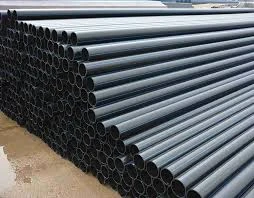Oct . 18, 2024 04:43 Back to list
High-Density Polyethylene Rainwater Drainage Solutions for Efficient Water Management
The Advantages of HDPE Rain Pipes in Modern Drainage Systems
In recent years, the use of high-density polyethylene (HDPE) rain pipes has gained significant traction in modern drainage solutions. Designed to efficiently manage stormwater runoff, HDPE rain pipes provide numerous advantages over traditional materials. This article explores the key benefits of using HDPE rain pipes, their applications, and why they are becoming the preferred choice for both residential and commercial drainage systems.
What is HDPE?
HDPE, or high-density polyethylene, is a thermoplastic polymer made from petroleum. Known for its strength, durability, and resistance to moisture, HDPE is an ideal material for constructing pipes. The properties of HDPE make it particularly suited for applications where exposure to water and harsh environmental conditions are common.
Durability and Longevity
One of the most significant advantages of HDPE rain pipes is their exceptional durability. Unlike traditional materials such as concrete or PVC, HDPE is resistant to corrosion, chemicals, and UV radiation. This resistance means that HDPE pipes can withstand harsh weather conditions, making them ideal for areas prone to heavy rainfall or flooding. Furthermore, HDPE pipes have a longer lifespan, often exceeding 50 years, which translates to lower maintenance and replacement costs over time.
Flexibility and Lightweight Design
HDPE pipes are notable for their flexibility. This characteristic allows them to bend and adapt to various terrain and installation configurations without compromising on integrity. Additionally, HDPE pipes are significantly lighter than traditional materials, making transportation and installation easier and more cost-effective. The lightweight nature reduces the need for heavy machinery, which can minimize labor costs.
Smooth Interior Surface
hdpe rain pipe

The internal surface of HDPE rain pipes is smooth, which promotes efficient water flow and minimizes the chances of clogs. The reduced friction means that sedimentation is less likely to occur, ensuring that the drainage system remains functional and effective. This efficiency is particularly crucial in urban areas, where stormwater management is essential in preventing flooding and waterlogging.
Sustainability and Eco-Friendliness
In today's environmentally conscious world, sustainability is a key consideration in material selection. HDPE is a recyclable material, and its production has a relatively low environmental impact compared to other pipe materials. Moreover, the long lifespan and durability of HDPE rain pipes mean fewer replacements and less waste in landfills over time. Choosing HDPE contributes to greener building practices and supports the growing push toward sustainable infrastructure.
Cost-Effectiveness
Despite the initial investment, HDPE rain pipes are cost-effective in the long run. Their durability, low maintenance requirements, and energy-efficient installation process result in significant savings over time. The reduced risk of leaks and breakages further underscores their cost-effectiveness, making them a sound choice for both residential and commercial projects.
Versatile Applications
HDPE rain pipes are versatile and can be employed in various applications, including agricultural drainage, stormwater management systems, and residential landscaping. Their adaptability makes them suitable for both above-ground and below-ground installations, catering to a wide range of drainage needs. Whether it's managing runoff from a roof or ensuring proper drainage in a farm field, HDPE pipes can meet diverse requirements.
Conclusion
As the demand for efficient drainage solutions continues to rise, HDPE rain pipes stand out as a superior choice for modern systems. Their durability, flexibility, and eco-friendliness position them as a frontrunner in the building and construction industry. With the added benefits of cost-effectiveness and versatility, it is easy to see why HDPE rain pipes are becoming increasingly popular for managing rainwater and stormwater runoff. As we move towards a more sustainable future, the adoption of high-density polyethylene in drainage systems will undoubtedly be a critical component in the pursuit of effective and reliable water management solutions.
-
Durable PP Rigid Sheet: Lightweight, Chemical Resistant Solutions
NewsAug.21,2025
-
PVC Grey Sheet for Extraction: Chemical Resistant & Durable
NewsAug.19,2025
-
Durable PVC Pipe Fittings for Plumbing & Irrigation Needs
NewsAug.18,2025
-
HDPE Steel Belt Reinforced Spiral Corrugated Pipe | High Strength
NewsAug.17,2025
-
HDPE Pipe Fittings: Durable, Leak-Proof Solutions
NewsAug.16,2025
-
Premium CPVC Sheet: High-Temp & Chemical Resistant Solutions
NewsAug.15,2025

